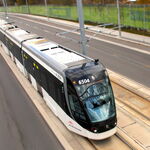2018 Ontario’s New EVSE Regulations
Because the number of electric vehicles on the roads of Ontario is growing at such a rapid pace it was only a matter of time before the provincial government took steps to address the issue. In their recent building code modifications they seek to facilitate the adoption of EVs by compelling developers, property owners, and businesses alike to equip up to 20% of their parking spaces with electric vehicle charging stations. In addition, the new codes which came into effect on January 1, 2018 state that all remaining spaces must be designed in a way that enables future charging station installations.
The $1,000 EVSE (Electric Vehicle Supply Equipment), Installation Rebate
While the new regulations only cover new construction, the provincial government has sweetened the pot for owners of existing homes by offering a rebate of $1,000 to homeowners who retrofit their garages with EVS equipment. The rebate is designed to cover up to $500 of equipment purchase and installation costs for a potential rebate total of $1,000.
For the most part EV champions across Canada have welcomed these latest developments as long overdue given what we now know about the environmental hazards of fossil fuel dependence. While the latest code revisions and rebate programs seem to be a firm step in the right direction they have generated as many, if not more, questions than they have answers. So below we’ll attempt to provide as many answers as we can regarding these important EV-related developments.
Ontario EV Charging Station Rebate
Ontario Municipal Building Code Regarding Electrical Vehicle Supply Equipment (EVSE)
On January 1, 2018 changes to the Ontario Municipal Building Code regarding electrical vehicle supply equipment (also known as EVSE) came into effect. These changes were made by the
Ontario government’s Ministry of Municipal Affairs in response to the fact that the number of EVs on the roads of the province have been growing by leaps and bounds in recent years. Here we’re going to take you through the most commonly asked questions about the new code modifications for both residential and non-residential structures. Although the topic can lend itself to extremely dry recitations of arcane information we’re going to try and keep the language here as clear and concise as possible. Let’s begin with how the new regulations impact residential structures, including detached homes, semi-detached homes, and row houses.
[...]





